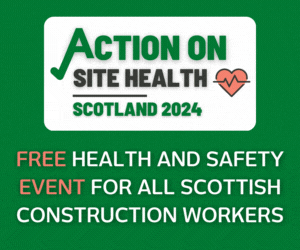Blog: Real estate bounce-back could drive growth in Scotland’s vibrant economy

Grant Thornton’s head of property & construction in Scotland, Lorraine Macphail, on current market conditions in Scotland’s construction, property and retail sectors.
In 2009, Scotland’s real estate market was among the biggest industrial victims of the global economic downturn.
After years of sustained growth where cranes dotted the skylines of our biggest cities – from Aberdeen to Glasgow. But, as the banks called in their lines, construction firms, property developers, estate agents and hundreds of other businesses in the chain, went to the wall.
Fast forward to 2018 and we’re witnessing a different kind of uncertainty. Brexit and the prospect of a second independence referendum have created a challenging environment for all businesses looking for some long term certainty to support their growth strategies.
Scotland’s real estate market relies on certainty. From house builders to commercial landlords, without buoyant consumer demand and a healthy employment market, there simply isn’t the need to build and grow. With that in mind, we should be in a pretty desperate place right now, but that’s not what we are seeing.
Lessons have been learned from 2009. Our property and construction firms are leaner, more innovative and more focused than ever before. They’re in a position to capitalise on market fluctuations and now recognise the need to embrace the opportunities that change brings.
Overseas investors are helping to fuel the activity we’ve seen in recent Scottish real estate deals. Figures from investment research firm MSCI suggest that Glasgow and Edinburgh are among the top performers in the UK cities. Scotland’s capital is second only to Bristol for capital growth with no sign of any imminent slowdown. We’ll have to see what long-term impact any radical political shift could have, but – for the time being at least – the market is holding out and remaining confident.
Investor confidence is key to the success of a vibrant Scotland, but we ultimately can’t ignore some of the seismic challenges that lie ahead. Retail and real estate are heavily linked and the recent high-profile failures of House of Fraser and Poundworld demonstrate the real issues facing our high streets. Technological and economic disruption are piling the pressure on an industry that is struggling to keep up with changing consumer habits.
Similarly, our construction firms are facing up to their own future crises – primarily access to labour. Our departure from the European Union creates a significant skills gap in a country that is currently enjoying near-record-low unemployment. Put simply, we need overseas workers to meet demand and any break in the eco-chain could be felt across the board.
Scotland’s real estate market is facing up to a rapidly changing world – one that is increasingly unpredictable and fractured. There is a need for the entire industry – as broad as it is – to come together and explore solutions to ensure it remains a key part of Scotland’s future economic prosperity. Both the retail and property construction sectors are vital to our ongoing success. Greater collaboration and a drive to become world leaders in innovation must be at the heart of any future strategy.
The outlook is mixed, but by bringing together the outstanding talent that currently exists across the range of industry groups, we can all see the benefits and ensure that real estate is central in helping to shape a more sustainable, vibrant Scotland.





















